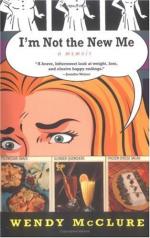“And now,” said Miss Frazier, delightedly, to the captain, “she’s a real ship, isn’t she? It seems only the other day father gave the order for her, and now—and now—isn’t she a beauty?” The girl was proud of the firm, and talked as though she were the controlling partner.
“Oh, she’s no so bad,” the skipper replied, cautiously. “But I’m sayin’ that it takes more than the christenin’ to mak’ a ship. In the nature o’ things, Miss Frazier, if ye follow me, she’s just irons and rivets and plates put into the form of a ship. She has to find herself yet.”
“But I thought father said she was exceptionally well found.”
“So she is,” said the skipper, with a laugh. “But it’s this way wi’ ships, Miss Frazier. She’s all here, but the parts of her have not learned to work together yet. They’ve had no chance.”
“But the engines are working beautifully. I can hear them.”
“Yes, indeed. But there is more than engines to a ship. Every inch of her, ye’ll understand, has to be livened up, and made to work wi’ its neighbor—sweetenin’ her, we call it, technically.”
“And how will you do it?” the girl asked.
“We can no more than drive and steer her and so forth; but if we have rough weather this trip—it’s likely—she’ll learn the rest by heart! For a ship, ye’ll obsairve, Miss Frazier, is in no sense a reegid body, closed at both ends. She’s a highly complex structure o’ various an’ conflictin’ strains, wi’ tissues that must give an’ tak’ accordin’ to her personal modulus of eelasteecity.” Mr. Buchanan, the chief engineer, in his blue coat with gilt buttons, was coming toward them. “I’m sayin’ to Miss Frazier, here, that our little ‘Dimbula’ has to be sweetened yet, and nothin’ but a gale will do it. How’s all wi’ your engines, Buck?”
“Well enough—true by plumb an’ rule, of course; but there’s no spontaneeity yet.” He turned to the girl. “Take my word, Miss Frazier, and maybe ye’ll comprehend later, even after a pretty girl’s christened a ship it does not follow that there’s such a thing as a ship under the men that work her.”




